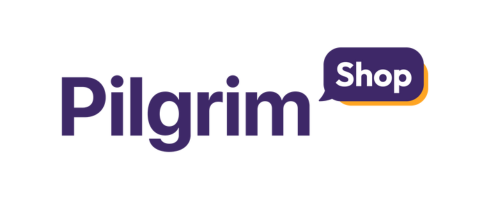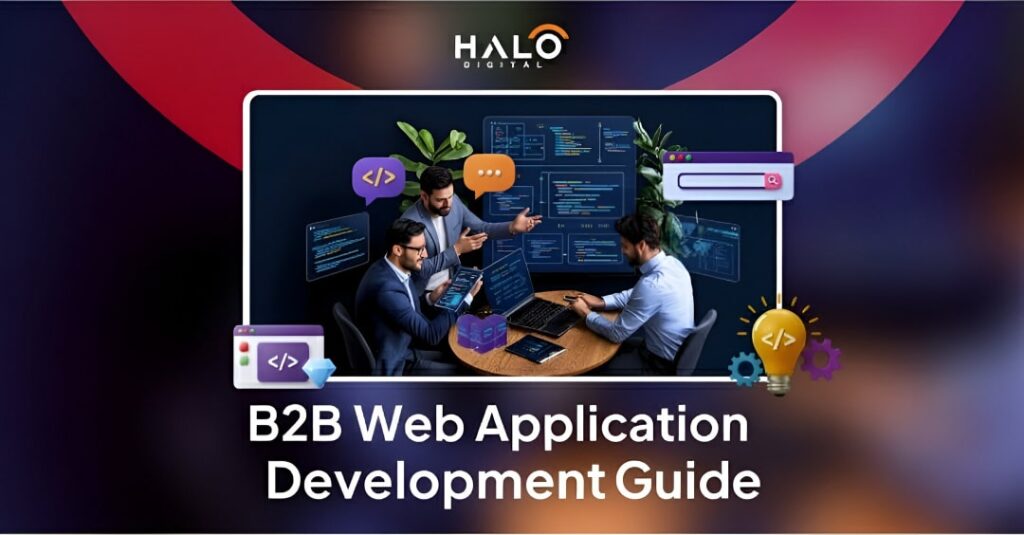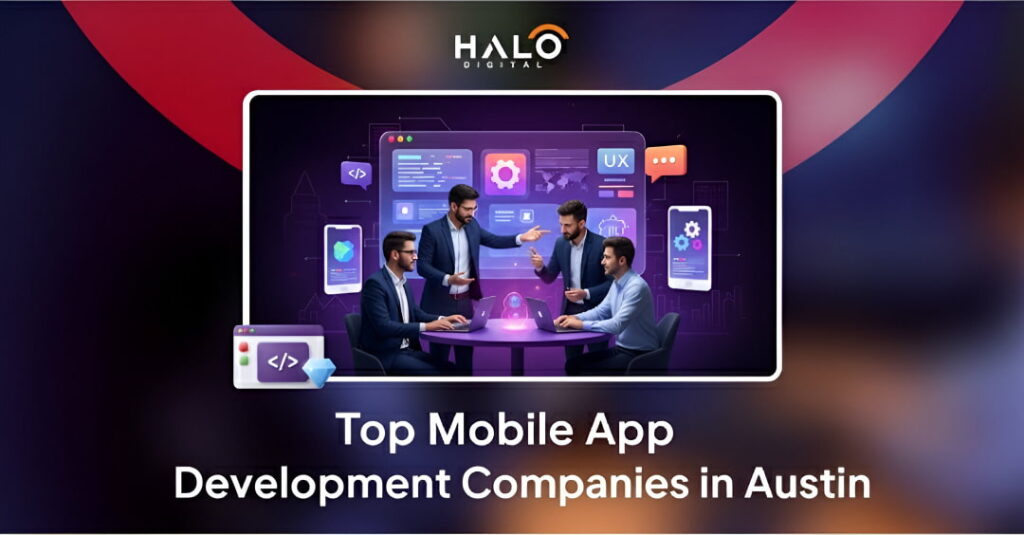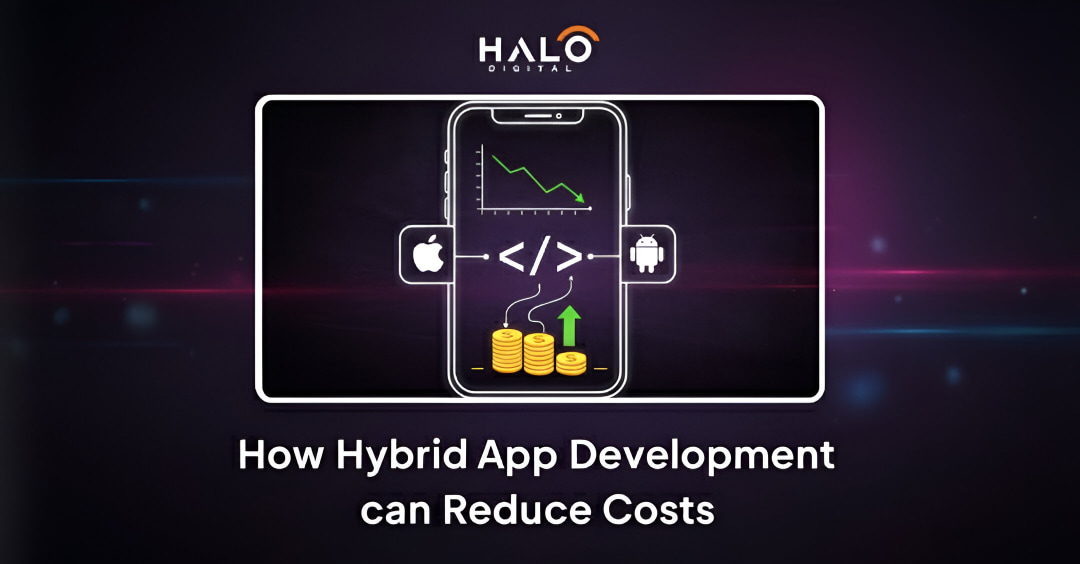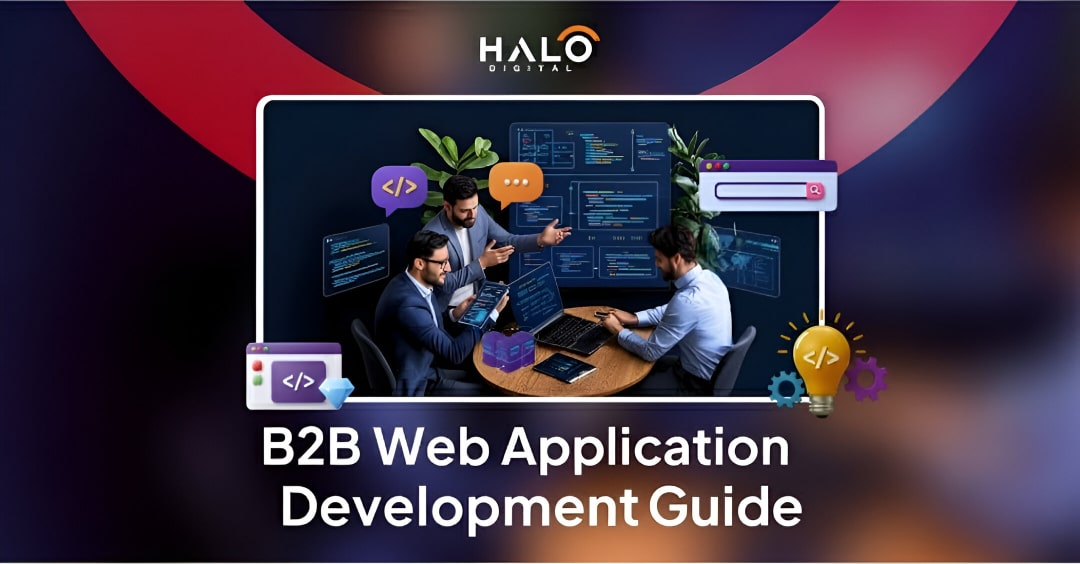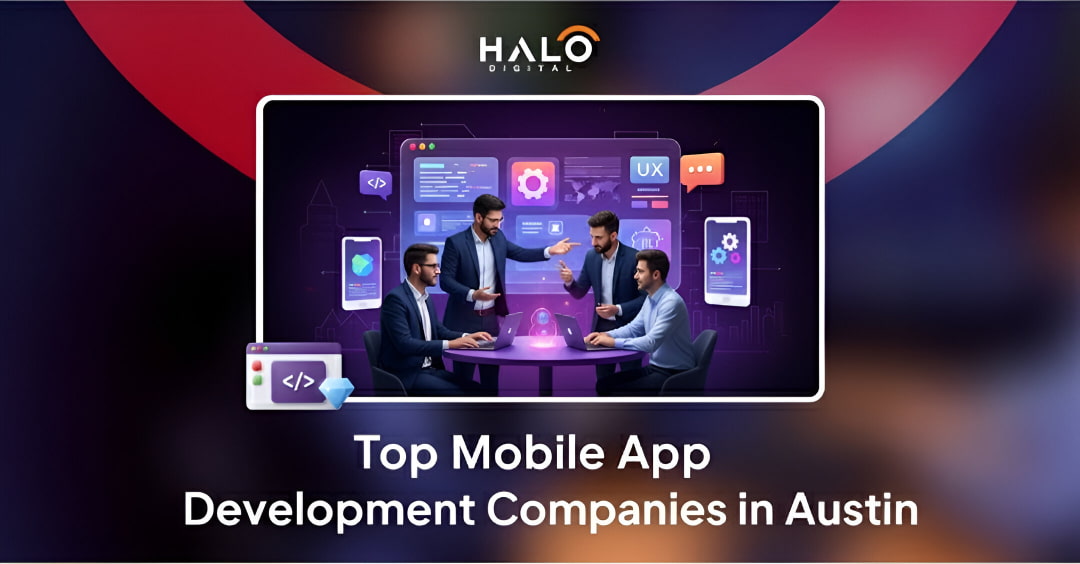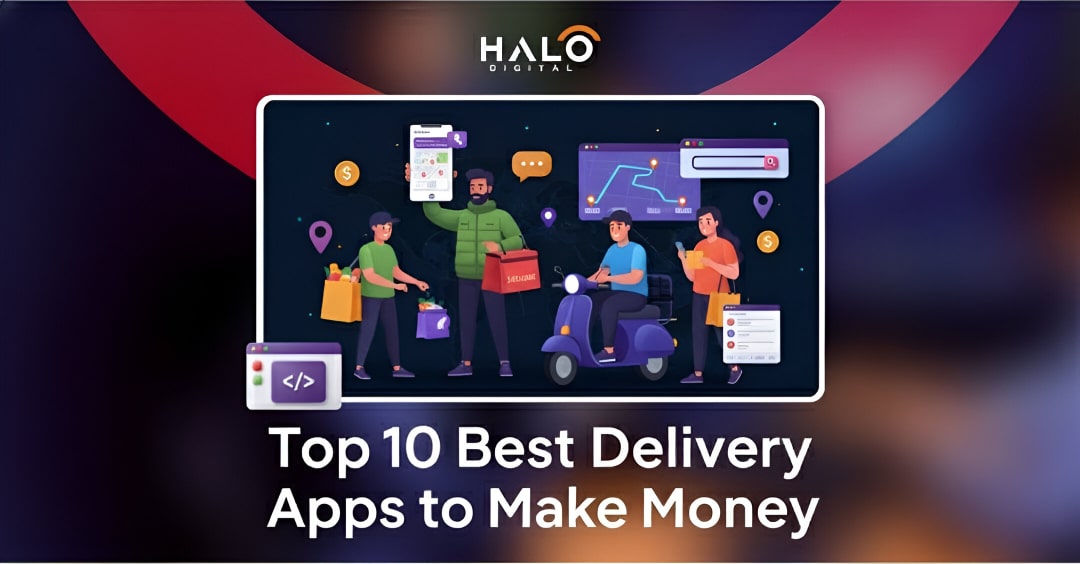- Hybrid development builds one application for both iOS and Android. It does not require two separate codebases.
- This “write once, run everywhere” model is the single biggest way to reduce app development costs.
- Your long term app development TCO (Total Cost of Ownership) is lower. You only need to maintain and update one codebase, not two.
- Modern hybrid frameworks like Flutter and React Native deliver fast, smooth, near native performance. The old “hybrid is slow” myth is dead.
- A faster hybrid app time to market is a key benefit. You can launch on both app stores in months, not a year, and start earning revenue sooner.
The median cost for a complex native app can exceed $150,000. That is per platform. As the founder of an agency, I see businesses face this painful choice every day. Do you build for iOS or Android first? You risk alienating half your potential audience right from the start. Or, you can double your budget. You can pay for two full development cycles. Most businesses believe this is their only option. They think they must build two expensive, separate, native apps to get the quality and performance they need.
This is a false choice. It is a budget trap.
Hybrid app development offers a strategic, financially sound alternative. It delivers a high-quality, near-native experience. It does so without the astronomical price tag. This guide will show you exactly how hybrid app development reduces your costs. It will detail how to avoid the trap and get your app to market smarter and faster.
What is Hybrid App Development?
It is one single application. It is built from one single codebase. This one app, however, is packaged to run perfectly on both iOS and Android. It looks and feels like a native app on each device.
Think of a hybrid app as a “chameleon.”
How does this work? We do not use jargon here. The concept is simple. We use a framework like React Native or Flutter. These tools act as a “bridge.” They let us write code once using a common language (like JavaScript or Dart). The framework then translates or “compiles” that code into the native building blocks for iOS and Android.
The core principle is powerful: Write Once, Run Everywhere.
This is not the same as developing a web app. A web app simply runs in a phone’s browser. A hybrid app is a real app. You download it from the Apple App Store or Google Play Store. It is installed on your device.
Here is a simple table to show the difference.
Hybrid vs. Native vs. Web App: A Simple Comparison
| Feature | Native App (Swift/Kotlin) | Hybrid App (React Native/Flutter) | Web App (In Browser) |
|---|---|---|---|
| Development Cost | Very High | Medium | Low |
| Time to Market | Slow (Two separate apps) | Fast (One codebase) | Very Fast |
| Performance | Excellent (Best possible) | Very Good (Near Native) | Good (Browser Dependant) |
| App Store Access | Yes (Required) | Yes (Required) | No (Runs in browser) |
| Device Feature Access | Full Access (Camera, GPS etc.) | Full Access (Via bridges) | Limited Access |
The table makes the “sweet spot” obvious. Hybrid apps give you the best balance. You get App Store access and full device features. You get great performance. But you avoid the massive hybrid vs native app development cost and slow timeline of native.
The 7 Main Ways Hybrid App Development Can Reduce Costs
The savings are not just a small percentage. They are foundational. They change the entire financial model of your project. As an agency, we build apps both ways. I want to break down the seven main ways we see clients reduce web app development costs by choosing a hybrid strategy.
1. The “Code Once” Multiplier (The Biggest Saver)
This is the most significant cost saver. There is no contest.
In a traditional native project, you have two separate teams.
- One team writes your iOS app in Swift or Objective C.
- A second team writes your Android app in Kotlin or Java.
You are paying two specialist teams. You are paying them to build the exact same features twice. They build the login screen twice. They build the user profile twice. They build the checkout process twice.
With hybrid development, you have one team. They write one codebase.
A framework like Flutter or React Native handles the hard work. It compiles that single code into an app for iOS and an app for Android. This is not just a 50% saving on developer salaries. It is often more.
It simplifies project management. It unifies the team. It removes redundant communication. This is the number one factor that lowers the high native app development cost.
2. Accelerated Time-to-Market
In business, time is money. It is a fact.
A faster hybrid app time to market means you start earning revenue sooner. You get critical user feedback faster. You can iterate and improve before your competition even launches.
Building two complete native apps takes a long time. For a complex application, we often budget 9 to 12 months.
A hybrid app can be designed, built, tested, and launched in 4 to 6 months.
Fewer development months mean fewer billable hours. It means your internal team is focused for a shorter period. The math is simple. Launching in half the time saves you a massive amount of capital.
3. Dramatically Simplified Maintenance & Updates
This is the hidden cost of native apps. I call it the “maintenance iceberg.”
Launching your app is just the tip. The real, long-term cost is the support and maintenance after launch.
Imagine a user finds a bug in the payment screen.
- With native: You now have to pay your two teams. The iOS team investigates and fixes the bug in the Swift code. The Android team investigates and fixes the same bug in the Kotlin code. You have to test it twice. You have to deploy two separate updates to two app stores. You paid twice for one fix.
- With hybrid: You find the bug. Your team fixes it once in the core codebase. They test it. They deploy the update.
This cuts your long term app development TCO (Total Cost of Ownership) by 50% or more. At HALO Digital, we build products for their entire lifecycle. Thinking about TCO is critical.
4. Leaner, More Flexible Development Teams
Hiring is a major business challenge. Finding an expert Swift developer and an expert Kotlin developer is difficult. They are niche specialists and are very expensive.
Hybrid development leverages more common and accessible technologies.
- React Native uses JavaScript (via React). This is the most popular programming language in the world.
- Flutter uses Dart. It is a modern language backed by Google. It is known for being easy to learn for developers.
This means the talent pool is much larger. We can build a leaner, more flexible, and more efficient team. The costs for this talent are more manageable. That saving is passed directly on to our clients.
When you choose a mobile app development company in Atlanta or any other state, for example, you want a partner with a deep bench of this flexible talent, not just a few siloed native developers.
5. Reduced QA & Testing Overheads
Quality Assurance (QA) is nonnegotiable. It is also a very time-consuming part of any project.
With two native apps, your QA team must run two full, separate test plans. They test every feature, every button, and every user flow on iOS. Then, they have to do it all over again on Android. This is double the work.
With a hybrid app, the core business logic is tested once. The “submit order” function is the same code. The QA team can validate it one time.
Their time is then focused on more valuable tasks. They check for minor, platform-specific UI tweaks. For example, how does a menu render on a Samsung phone versus an iPhone? This does not mean we skip testing. It means our testing is smarter. It is more efficient. It cuts out thousands of hours of redundant work.
6. Unified UI/UX Design & Adaptation
Design is another area where you find significant savings.
For a strict native app project, you might run two parallel design projects. One designer follows Apple’s Human Interface Guidelines. Another designer follows Google’s Material Design. This means two sets of wireframes. Two sets of prototypes.
With hybrid, you design one set of wireframes. You create one primary user flow. You establish one core brand identity.
Of course, a good agency (like us) will adapt components. We make the app feel native on each platform. An alert box will look like an iOS alert on an iPhone. It will look like an Android alert on a Samsung. But we are not starting from scratch twice. The core user journey is unified. This saves significant design time and budget.
7. Lower Backend & Infrastructure Costs
This is a more technical point, but it affects your monthly bills.
Your app needs to “talk” to a server. This communication happens through an API (Application Programming Interface). When you have two separate native clients, you often have to manage and version two clients. This can complicate your backend architecture.
With a single hybrid application, you are building one backend. It is designed to serve one application. This simplifies your API management. It can reduce server load and complexity. This, in turn, lowers your monthly infrastructure and hosting bills.
The Hybrid Advantage: Key Benefits Beyond Just Cost
The hybrid app development benefits are not just about the initial price tag. The cost saving is what gets your attention. But the real advantages I see for my clients are strategic.
- Cross Platform Reach: This is the most obvious one. You reach 100% of your potential market from day one. You are on the Apple App Store and the Google Play Store simultaneously. No more “Sorry, Android version coming soon.”
- Native Like User Experience (UX): Let’s be clear. Modern hybrid apps feel amazing. Using frameworks like Flutter, we create smooth, 60 fps animations. The apps are responsive, fluid, and fast. They are not the sluggish, wrapped web pages of a decade ago.
- Full Hardware Access: This is a big one. Hybrid apps can use all the phone’s hardware. We build apps that use the camera. We use GPS for location tracking. We use the accelerometer. We use Face ID and fingerprint scanners for secure login. Anything a native app can do, a hybrid app can do via its “bridge.”
- Scalability: Hybrid apps are highly scalable. Because they are often built on web technologies and principles, they are designed to scale. We build them on efficient, cloud-native backends. They can support millions of users without issue.
- Faster Updates: Need to push a new feature or a critical fix? You can do it faster. Because you are only updating one codebase, the cycle is shorter. Some frameworks even support “over the air” (OTA) updates for minor changes. This lets you bypass the app store review time. This agility is a huge competitive edge.
Financial Analysis: A Head-to-Head Cost Breakdown (Native vs. Hybrid)
Let’s stop talking in concepts and look at some real numbers. As an agency, we quote projects every week. I want to share a realistic scenario that I see all the time.
Case Study: The $50,000 MVP
Let’s say you are a startup. You have a great idea for an app. You have raised a seed round. Your budget for a Minimum Viable Product (MVP) is $50,000.
The Native MVP Path
You come to us and say you want an iOS app and an Android app. We scope it out. To build your MVP on both platforms, your team needs:
- 1 iOS Developer
- 1 Android Developer
- 1 Backend Developer
- 1 Project Manager
- 1 QA Tester
We estimate this team will take 4 months. The cost for this team and timeline comes out to $100,000.
You only have $50,000. You are now forced to make a terrible choice. “Okay,” you say, “let’s just build the iOS app for now.” You have just cut your potential market in half.
The Hybrid MVP Path
You come to us with the same idea. We recommend a hybrid approach with Flutter. To build your MVP on both platforms, your team needs:
- 1 Hybrid (Flutter) Developer
- 1 Backend Developer
- 1 Project Manager
- 1 QA Tester
We estimate this leaner team will also take 4 months. The cost for this team comes out to $60,000.
This is much closer to your $50,000 budget. We can now have a real conversation. We can look for one or two features to push to “phase 2.” We can get the project cost down to $50,000.
You walk away with an app for both iOS and Android. You launch to your full audience. The hybrid vs native app development cost was the difference between launching your business and cutting it in half.
Visualizing the 2 Year Total Cost of Ownership (TCO)
Now, let’s look past launch day. Your app development TCO is the real number that matters to your business’s health.
I want you to visualize a simple bar chart.
Native App TCO
- Year 1: A very tall bar. This includes the [High Initial Dev Cost] + [High (x2) Maintenance Cost].
- Year 2: Another tall bar. This is the [High (x2) Maintenance Cost] for bug fixes and new OS versions.
Hybrid App TCO
- Year 1: A medium bar. This is the [Medium Initial Dev Cost] + [Low (x1) Maintenance Cost].
- Year 2: A short bar. This is just the [Low (x1) Maintenance Cost].
The visual is clear. The cost gap between native and hybrid widens dramatically over time. The maintenance savings from hybrid development compound month after month. After two years, you may have saved enough money to build an entirely new feature set.
Stop Guessing Your App Budget
You are paying for two apps but only getting one business. Let’s fix that. Get a clear, no-obligation cost analysis from our team. We can show you the exact TCO difference for your project.
HALO Digital is the perfect starting point for your next hybrid app as we have the best team of developers.
Addressing the “But…”: Debunking 4 Common Hybrid Myths
I have been in this industry for a long time. When I recommend hybrid, I often hear the same objections. The problem is, most of these “myths” are based on outdated information from 2012.
Let’s clear the air.
Myth 1: “Hybrid apps are just slow, laggy web pages.”
Truth: This was true a decade ago. It is completely false today. Modern frameworks like Flutter and React Native are revolutionary. They compile to high-performance, near-native code. They use the phone’s GPU. They produce smooth, 60 fps animations.
For 95% of business apps, the user cannot tell the difference. We build complex e commerce apps, social apps, and grocery delivery apps with hybrid. They are fast and fluid.
Myth 2: “You get a poor, generic user experience.”
Truth: This only happens with a bad developer or a lazy agency. Modern hybrid frameworks have rich component libraries. They automatically render native UI elements. A skilled agency, like HALO Digital, knows how to do this.
We ensure the app feels native. We respect platform conventions. The navigation on iOS will feel like iOS. The buttons on Android will feel like Android. A poor UX is a design failure, not a framework failure.
Myth 3: “You can’t access native device features (Camera, GPS, Face ID).”
Truth: This is completely false. An efficient “bridge” layer exists in all modern hybrid frameworks. This layer gives hybrid apps full and complete access to all device hardware. I have personally architected hybrid apps that use:
- The Camera (for photo uploads)
- GPS (for location tracking and maps)
- Face ID & Fingerprint (for secure login)
- Push Notifications
- The Accelerometer
- Bluetooth
Everything is possible. Do not let anyone tell you otherwise.
Myth 4: “Hybrid apps aren’t scalable or secure for enterprises.”
Truth: This is one of the most damaging myths. Security and scalability are functions of your architecture. They are not functions of your frontend framework.
Major enterprise apps use hybrid.
- Walmart (React Native)
- Bloomberg (React Native)
- Instagram (uses React Native for many features)
- Google Ads (Flutter)
These companies trust hybrid for security. They trust it for performance at a massive scale. You can too.
When is Hybrid the Wrong Choice? (An Honest Assessment)
I want to be transparent. My goal is to be a trusted partner, not just a salesman. Hybrid is not a silver bullet. It is the right choice for 95% of businesses. But there are a few cases where I would still recommend native development.
If you are building… a high performance, graphically intensive 3D game.
- If your app is the next Genshin Impact or Call of Duty Mobile. You need raw, low level graphics power. You should use a native game engine like Unity or Unreal.
If you are building… an app that requires complex, low level background processing.
- If your app is a custom OS level utility. Maybe it’s an app that constantly monitors network data packets in the background. Native might be a better fit for this deep, OS level integration.
If you are building… an app where 0.1s of lag is the difference between success and failure.
- The only example here is high frequency trading. If you are building a stock trading app where milliseconds count, native has a slight, unnoticeable edge in raw computation.
For Everyone Else (95% of Businesses):
Let’s be realistic. You are probably not building those.
You are building an e commerce app. A social media app. An internal tool for your team. A booking app. A content or media app.
For all of these, hybrid is the smarter, more strategic choice. It is the best way to reduce app development costs while maximizing your reach and ROI.
How to Maximize Your Savings & Guarantee Project Success
Choosing hybrid is the first step. How you build your hybrid app determines its success. You cannot just hire the cheapest freelancer and expect a world-class app. This is where our expertise at HALO Digital comes in.
1. Choose the Right Framework (Flutter vs. React Native)
This is a key strategic decision.
- React Native is backed by Facebook (Meta). It uses JavaScript, which means a massive developer ecosystem.
- Flutter is backed by Google. It uses a language called Dart. It is known for its incredible performance and beautiful, pixel perfect UIs.
Which one is better? The answer I always give is: “It depends.” It depends on your project’s specific needs. It depends on your team’s existing skills. It depends on your long term goals. This is a complex decision. It is the first thing we discuss with you in a strategic consultation.
2. Start with a Feature Lean MVP (Minimum Viable Product)
Do not try to build everything at once. This is the single biggest mistake I see founders make. The hybrid approach is perfect for an MVP. Launch quickly with just your core, value-driving features. Get real user feedback.
Then, use that feedback to iterate. This saves you a fortune. It also ensures you build a product that people actually want. We specialize in app development for startups and use this MVP model to guarantee success.
3. Don’t Skimp on UX/UI Design
This is the biggest hybrid app mistake. People try to cut corners on design because they are saving money on code. This is backwards. You should reinvest 10% of your code savings into a rock-solid, beautiful, platform-aware design. A cheap app that looks cheap will always fail. It does not matter how good the code is. Users will delete it in 30 seconds.
4. Partner with an Experienced Hybrid Agency (Not a Freelancer)
This is my single most important piece of advice. This is your key to success.
A single freelancer might know React Native.
An agency, like HALO Digital, understands the strategy.
We understand the architecture. We understand the security implications. We understand the long-term app development TCO. We know which framework is right for your specific business goals. A good partner is the difference between a failed project and a market-leading product.
Conclusion: How hybrid app development can reduce costs
The choice is not “cheap vs. quality.” That is the old, outdated way of thinking. The real choice is “financially reckless vs. financially smart.”
The hybrid app development benefits save you money, yes. But its real value is ROI. It gets your product to market faster. It puts you on more devices. It lowers your long term costs. It gives your business the agility to win.
Let’s Build Your App the Smart Way with HALO Digital
Stop letting your budget force you into bad decisions. HALO Digital is the leading Tampa app development company focused on high-performance hybrid app development. We build beautiful, scalable apps that cost less and deliver more.
Our Development Services
Our services are designed for businesses that need real results, not just code.
- Mobile App development services
- Hybrid App Development (Flutter & React Native)
- Native App Development (iOS & Android)
- Strategic App Consultation (Tech & MVP Planning)
- UI/UX Design for Mobile
- App Maintenance & Long-Term Support
Our Case Studies
We deliver the savings and quality-experience for both our clients and their users. See for yourself.
- For Pilgrim, we built the ultimate Hajj & Umrah companion app using Flutter. This hybrid app provides AI-powered answers, Tawaf tracking, and verified guides, proving hybrid can deliver a complex, feature-rich, and smooth experience for thousands of users.
- For DonorSync, we developed a full-featured SaaS platform. This shows our expertise in building secure, scalable, and compliant systems that automate complex tasks like donation management and Gift Aid claims.
- For Unscripted, we used a data-driven digital marketing strategy to elevate the luxury brand’s online presence, proving our expertise goes beyond just development to drive real sales and brand recognition.
Let’s talk. We will help you navigate from idea to launch and define your MVP, and build an app your users love and your competitors envy.
FAQs
How much does a hybrid app actually cost?
The cost of a hybrid app typically starts between $30,000 to $50,000 for a simple Minimum Viable Product (MVP). Complex, feature-rich apps can cost $100,000 or more. A key advantage is that this price covers both iOS and Android platforms, making it significantly cheaper than developing two separate native apps.
Is hybrid app development faster than native?
Yes, hybrid app development is significantly faster. Utilizing the “write once, run everywhere” model accelerates the time to market by an estimated 30% to 50% compared to building a full, two-platform native application.
Will users be able to tell my app is hybrid?
No, users will not be able to tell your app is hybrid if it is built correctly using modern frameworks like Flutter or React Native. The performance, animations, and user interface are now virtually indistinguishable from native apps for almost all use cases.
Can my hybrid app be published on the Apple App Store and Google Play Store?
Absolutely, hybrid apps can be published on both the Apple App Store and Google Play Store. The hybrid code is packaged into a real, native application file (.ipa for iOS, .apk for Android) and follows the exact same submission, review, and publishing process as any traditional native app.
What’s the difference between hybrid and cross platform?
The difference between hybrid and cross-platform is that the terms are often used interchangeably, but “cross platform” is the broad category for any technology that builds for multiple operating systems. “Hybrid” is a specific type of cross-platform development.

Abdullah Mangi is an SEO strategist and content writer with 5 years of experience helping businesses grow online. He writes about programming, tech, online business, and practical how-to topics. Abdullah has worked with clients in SaaS, software development, web design, link building, yacht rentals, gardening, car rentals, and recruitment.










